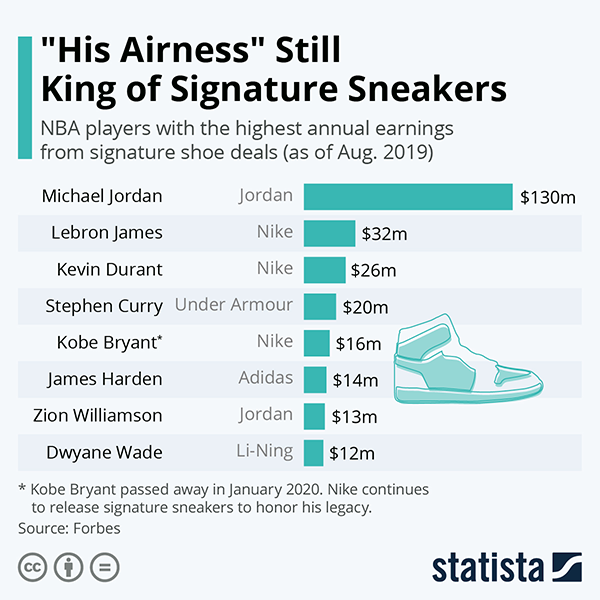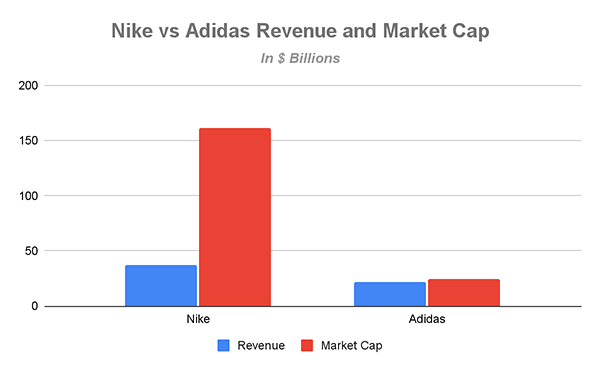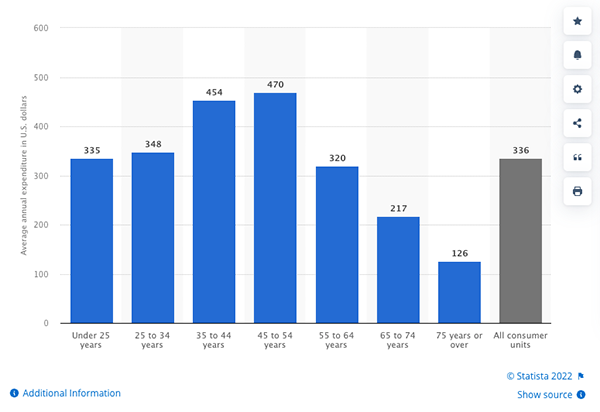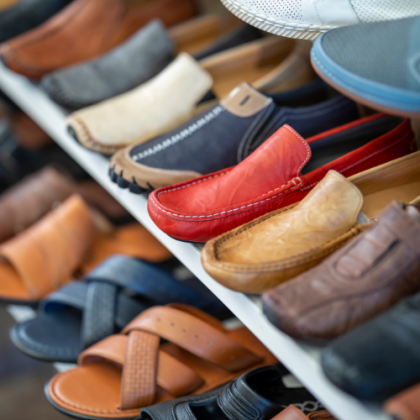There was a Converse outlet store not too far from where I grew up where, a couple times a year, they would hold a BOGO sale. My parents would take all the kids — there were a lot of us — to load up for the year.
We’d leave our shoes next to the door at home, and it looked like a Chuck Taylor appreciation event.
I share this anecdote both for the differences and similarities between now and then. Buying shoes once a year feels quaint. Buy-one-get-one-free sales are a mainstay. Driving to the store to buy shoes feels increasingly ancient. I think Chuck Taylor’s are still cool.
We humans have been wearing shoes as far back as 1600 BCE. We’ve probably been buying them just as long. It’s probably a safe bet that some Romans splurged on extra sandals.
But the internet changed how we buy footwear. Even still, the biggest players in footwear mostly come from a pre-online era. And though DTC and eCommerce is a massively growing category in the space, the market in several ways feels wide open.
 As part of our Mystery Shopper series, we wanted to deep dive into three DTC shoe brands: Allbirds, Rothy’s, and Athletic Propulsion Labs (APL).
As part of our Mystery Shopper series, we wanted to deep dive into three DTC shoe brands: Allbirds, Rothy’s, and Athletic Propulsion Labs (APL).
But before we go into those details, let’s briefly look at the state of the footwear industry.
The State of Shoes
The footwear industry is worth about $382 billion annually worldwide. In the US, it’s worth about $86 billion. This market is anticipated to grow by more than 5% annually.
There are seemingly as many categories of footwear as there are feet in the world. Shoes, however, are slightly whittled down — but not by much. And there are as many brands to buy from as there are styles to try on.
In the US alone, there are more than 900 shoe and footwear companies. Last year, Footwear News tracked 18 footwear-related merger and acquisition deals.
Trends in consumer taste impact who is up and who is down. But the most dominant players remain consistent, especially when you’re talking about who is number one.
Technically, Nike is a maker of athletic footwear — not shoes overall — but it leads the shoe industry in pretty much every category. In terms of revenue, it’s number one at $34 billion. Of the various athletes signed to shoe deals, Michael Jordan — who retired from the NBA nearly 20 years ago — still earns around $130 million a year from his line of shoes with Nike. Nike’s market cap is massive, far outpacing the rest of the industry at $160 billion.

In fact, Nike leads not only in the footwear industry, but in apparel overall. Nike is second only to Christian Dior in revenue.
If you’re coming for the king, you’re coming for Nike.
But most shoe industries aren’t coming for Nike. Most are coming for all the niches and spaces in between. And managing the customer experience online was the massive sea change that ushered in new competition.

The Zappos Effect
Selling shoes online wasn’t just a Zappos idea — remember ShoeBuy.com, anyone? — but it certainly set the standard.
Famously obsessed with customer experience, Zappos launched in 1999 and by 2015 was bringing in more than $2 billion in revenue a year. (It was sold in 2009 to Amazon.)
Co-founder, Tony Heish (who died tragically in 2020), credited the success of the company to unconventional moves such as generous return policies and staffing warehouses 24/7. It’s not that every DTC shoe brand follows exactly the same path as Zappos. But many of the same tenants have guided DTC counterparts including focusing on the end-to-end customer experience, making concessions to boost LTV, and making the speed from order to door as fast as possible.
Today, buying shoes online isn’t novel. One survey found that 74% of shoe purchases take place online.
The TOMS Effect
Another big impact was TOMS, which pioneered the one-to-one model. The model meant that for every pair of shoes the brand sold, it would give a pair away to someone in need somewhere in the world.
TOMS moved away from this model in 2021, but the legacy had an impact across DTC. The most obvious effects were the focus on sustainability and corporate responsibility. The idea that a consumer should feel good about their shopping has carried through with tons of organizations, so much so that a B Corp designation is often expected.
Bet You Can’t Buy Just One (Pair)
One of the more attractive qualities of the shoe industry is how many the average consumer will buy.
The US trails only the United Kingdom in per capita shoe consumption. The UK average was 7.4 pairs to the US’s 7.2 pairs as of 2018.
And that breaks down to a lot of money spent per customer. The average customer spends $336 per year on footwear. But that actually rises as high as $470 per year depending on the age group.

There is a lot of variability in the margins, though. In some cases, particularly with designer shoes, profit margins could be as high as 50%. But for Nike, it’s more like 5% when all is said and done.
The focus on the margins could become a bigger sticking point for DTC brands, especially as the overall economy hits headwinds.
Waiting for the Other Shoe to Drop
While shoes as a category have grown, the economic headwinds suggest tougher times could be ahead.
A recent survey from the Footwear Distributors & Retailers of America found that 87% of companies expect weaker sales in the next six months, with many expecting to cut or hold hiring flat. The reasons cited are related to inflation, inventory issues, and expected drops in demand.
While many of the companies that participated in the survey were bigger brands like Nike, it’s in line with what is already hitting brands like Allbirds. Allbirds, despite a strong Q2, slashed guidance for the following quarter, citing weakening demand.
Secret Shopping
That’s the industry that our three DTC brands — Allbirds, Rothy’s, and APL — are competing within, for better or worse. Like everything in DTC and eCommerce, a lot of success comes down to the marketing and customer experience each brand provides.
In the coming weeks, we’ll provide our deep dive into each brand and our personal experience with their brand to see what lessons can be gleaned.
Sign up to be sure not to miss an article.








